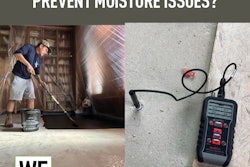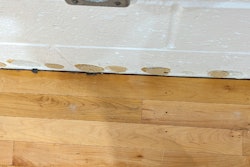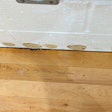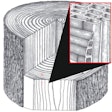
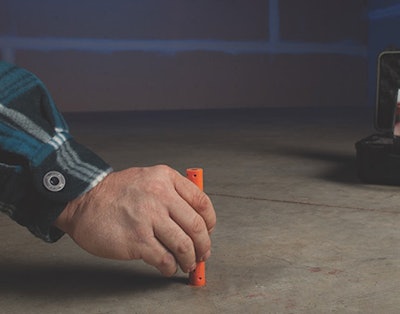 Courtesy of Wagner Meters
Courtesy of Wagner Meters
For flooring and concrete professionals, ASTM F2170 provides the standard for using relative humidity (RH) testing when measuring moisture content in concrete slabs. Meeting this standard is essential for limiting moisture-related flooring problems and the many liability and mitigation problems that can result from excess moisture.
The standard provides precise guidelines for RH testing methods. While any professional must understand the exact requirements of standard F2170-11 (the most recent version), following are 10 main guidelines to help ensure that you meet the criteria laid out in ASTM F2170-11. These requirements for the standard apply regardless of the RH test method being used.
Preparation
1) Confirm your test method equipment meets specifications. ASTM F2170-11 provides precise dimensions and requirements for accurate RH testing (section 6). Each hole must have a liner that isolates the sensor from ambient conditions, and sensors must have NIST-traceable calibration. Some calibration restrictions may apply, so read the standard carefully to be sure your test equipment qualifies for the most recent standard.
2) Make sure your calibration is up to date. Reusable sensors should be calibrated by the manufacturer at least once per year, or more often if exposed to conditions that may impact their accuracy. All sensors must be calibrated no less than 30 days prior to use.
3) Check job site conditions. Section 9 of the standard requires that both the slab and the ambient air above it must be at service conditions for a minimum of 48 hours before testing.
4) Map your sensor count and location. F2170-11 requires three test holes for the first 1,000 square feet and at least one additional hole for each additional 1,000 square feet. The total area of the slab and the number of test holes must be recorded on your report.
RELATED: Step by Step: How to Get a Concrete Slab Ready for Wood Floors
5) Know the required depth of the test holes. The test hole depth is not a fixed depth, but it must be calculated based on slab thickness and number of drying sides: 40 percent of the slab thickness if it is drying from one side only, or 20 percent of the slab thickness if it is drying from two sides. The depth is calculated to the bottom of the test hole (the location of the installed RH sensor or probe).
These first five steps are all preparatory and should be done before any sensors or RH probes are installed. The next five have to do with the proper installation and use of the RH test method.
RH Testing and Reporting
6) Drill and prepare the test holes. Each test hole must be drilled to the depth determined in Step 5 (section 10 of ASTM F2170-11) and properly prepared. For most RH testing systems, this includes cleaning any debris out of the test hole and inserting the necessary liner in the hole. Note that the liner requirements have been updated and the hole is to be fully lined to meet the -11 version of the ASTM standard.
7) Cap and seal each test location. To obtain moisture equilibrium, be sure to cap and seal each test hole according to the manufacturer’s directions. In addition, refer to those directions for when to insert the RH probe. Some products may be inserted when the hole is capped and sealed.
8) Equilibrate hole for 72 hours before initial reading. ASTM F2170-11 requires waiting at least 72 hours for moisture equilibrium before a documentable reading is recorded. Again, follow manufacturer’s directions for the probe that you are using. Some products may provide readings close to the final RH value within a short time frame. While not valid for compliance with this test, those readings can be helpful in making scheduling decisions or in choosing alternate adhesive or flooring options that might have higher moisture tolerances.
9) Take RH readings. After the 72-hour equilibration time frame, an initial reading should be recorded for each sensor. In addition to the RH value, verify that the reading does not drift more than 1 percent over a five-minute period. After the initial reading, readings can be updated at any time with two conditions in mind: If using reusable sensors, each sensor must equilibrate a minimum of one hour in each test hole before taking a reading; or, some products remain installed, allowing immediate readings.
10) Use a checklist to record and report the RH readings. Section 11 of ASTM F2170-11 details the requirements of each report, including test hole location, dates and times of measurements, RH reading, temperature reading and any other conditions that might impact the RH reading (see section 11 for complete reporting requirements).
With all areas of ASTM-compliant RH testing, precision is key and data integrity must also be the focus for each flooring professional. ASTM standards are established to help guide industry testing and also to help ensure standardized best practices to protect both the installer and the consumer. Be sure to familiarize yourself with ASTM F2170-11 and choose the best concrete moisture test method for the job.















